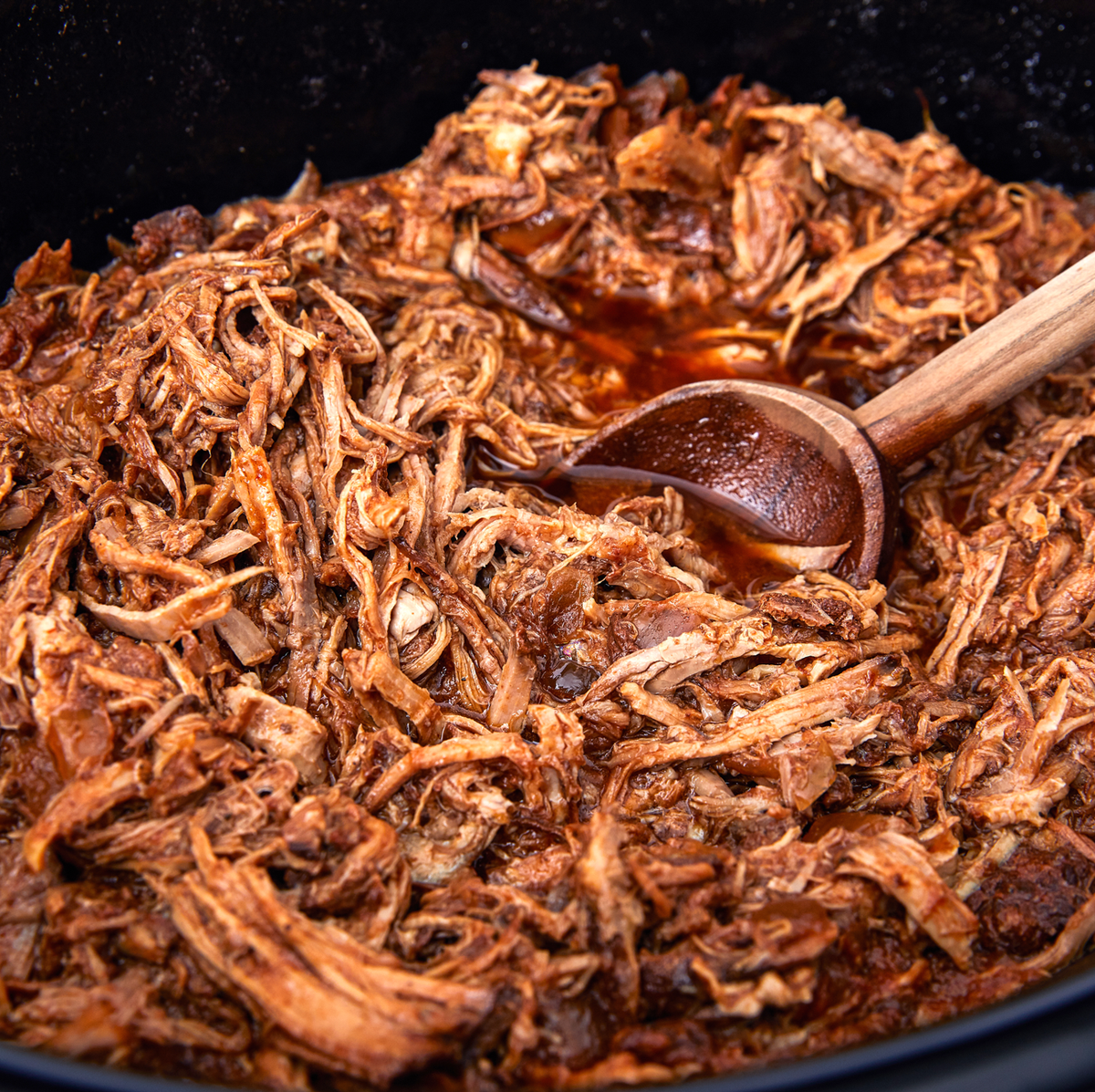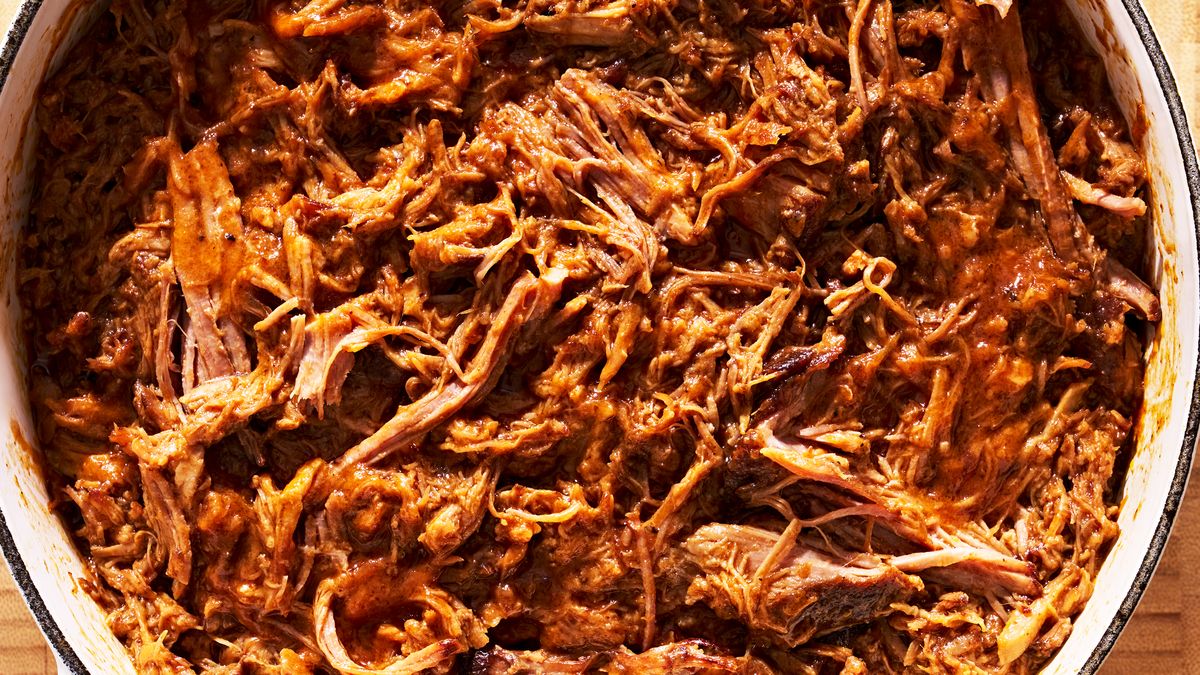Pulled pork is a beloved dish known for its tender, flavorful meat that practically melts in your mouth. It's a staple at barbecues and family gatherings, celebrated for its versatility and ability to pair with a wide range of sides and sauces. In this article, we'll delve into everything you need to know about making the perfect pulled pork, from selecting the right cut of meat to mastering various cooking methods.
What is Pulled Pork?
Pulled pork is a method of cooking pork, typically shoulder or butt, until it is so tender that it can be easily "pulled" or shredded into pieces. The meat is usually slow-cooked, allowing the flavors to develop deeply and the meat to become incredibly juicy and flavorful.
History of Pulled Pork
Pulled pork has its origins in the southeastern United States, particularly in the Carolinas, where barbecuing meat over a pit was a longstanding tradition. Over time, different regions have developed their own unique styles and techniques, from the vinegar-based sauces of North Carolina to the tomato-based sauces of Kansas City.
Ingredients Needed
To make mouth-watering pulled pork, you'll need:
Essential Ingredients:
- Pork Shoulder or Butt: The best cut for pulled pork due to its fat content and flavor.
- Dry Rub: A mix of spices like paprika, garlic powder, onion powder, and brown sugar.
- BBQ Sauce: Homemade or store-bought, to add during cooking or serving.
Optional Ingredients:
- Apple cider vinegar or apple juice for braising
- Mustard for a tangy flavor
- Liquid smoke for a smoky taste
Choosing the Right Cut of Pork
The key to great pulled pork lies in choosing the right cut of meat. The most popular cuts are:
Pork Shoulder: Also known as pork butt or Boston butt, this cut is marbled with fat, which renders down during cooking, keeping the meat juicy and flavorful.
Pork Picnic: Another cut from the shoulder, it has a bit more bone and connective tissue but is still excellent for pulled pork.
Look for meat with a good balance of meat and fat, as the fat will keep the pork moist during the long cooking process.
Preparing the Pork
Proper preparation is crucial for tender, flavorful pulled pork:
1. Trimming and Seasoning: Trim excess fat from the pork, but leave some to keep the meat moist. Season generously with your dry rub, making sure to cover all sides.
2. Marination Options: For extra flavor, marinate the pork in a mixture of apple cider vinegar, apple juice, and spices for a few hours or overnight.
Making the Dry Rub
A flavorful dry rub is essential for great pulled pork. Here's a basic recipe:
Ingredients:
- 1/4 cup brown sugar
- 1/4 cup paprika
- 1 tablespoon black pepper
- 1 tablespoon salt
- 1 tablespoon chili powder
- 1 tablespoon garlic powder
- 1 tablespoon onion powder
- 1 teaspoon cayenne pepper (optional for heat)
Applying the Rub:
Rub the mixture all over the pork, making sure to coat it thoroughly. Let it sit for at least 30 minutes to allow the flavors to penetrate the meat.
Cooking Methods
Pulled pork can be cooked using various methods, each bringing out different flavors and textures:
Slow Cooker Instructions:
1. Place the seasoned pork in the slow cooker.
2. Add a small amount of liquid (apple cider vinegar, apple juice, or broth) to the cooker.
3. Cook on low for 8-10 hours or on high for 4-6 hours, until the meat is tender and easily shredded.
Oven Instructions:
1. Preheat the oven to 300°F (150°C).
2. Place the pork in a roasting pan and add a small amount of liquid.
3. Cover tightly with foil and bake for 3-4 hours, or until the meat is tender.
4. Uncover and cook for an additional 1-2 hours to allow the outside to brown.
Smoker Instructions:
1. Preheat your smoker to 225°F (107°C).
2. Place the pork on the smoker rack and smoke for 4-5 hours, until it reaches an internal temperature of 195°F (90°C).
3. Wrap in foil and cook for an additional 1-2 hours.
Achieving the Perfect Texture
The secret to perfect pulled pork is cooking it low and slow:
Low and Slow Cooking: Cooking at a low temperature for a long time allows the connective tissues to break down, resulting in tender meat.
Resting the Pork: After cooking, let the pork rest for 15-20 minutes before shredding to allow the juices to redistribute.
Shredding the Pork
Shredding the pork properly ensures even texture and flavor distribution:
1. Use two forks to pull the meat apart into shreds.
2. Alternatively, use meat claws or your hands (with gloves) for faster shredding.
3. Mix the shredded pork with any remaining juices from the cooking process.
Serving Suggestions
Pulled pork is incredibly versatile and can be served in many ways:
Classic Sides:
- Coleslaw
- Baked beans
- Cornbread
- Potato salad
Creative Serving Ideas:
Tacos: Serve pulled pork in soft tortillas with fresh salsa and guacamole.
Sliders: Pile the pork on small buns with coleslaw and pickles.
Nachos: Layer pulled pork over tortilla chips with cheese, jalapeños, and sour cream.
Health Benefits of Pulled Pork
While pulled pork is often considered indulgent, it can be part of a balanced diet:
Protein: Pork is a great source of protein, essential for muscle repair and growth.
Vitamins and Minerals: Pork provides important nutrients like B vitamins, iron, and zinc.
Healthier Options: Use lean cuts of pork, reduce added sugars in the sauce, and pair with healthy sides.
Popular Variations
Pulled pork can be customized to fit different regional styles and flavor preferences:
Carolina-Style Pulled Pork:
Uses a vinegar-based sauce with a tangy and slightly spicy flavor.
Texas-Style Pulled Pork:
Features a simple dry rub and is often served with a tomato-based BBQ sauce.
Asian-Inspired Pulled Pork:
Marinated in soy sauce, ginger, garlic, and hoisin sauce for a savory and slightly sweet flavor.
Tips and Tricks for the Best Pulled Pork
Ensure your pulled pork is always a hit with these tips:
Avoid Overcooking: Monitor the internal temperature to avoid drying out the meat.
Use a Meat Thermometer: Cook to an internal temperature of 195-205°F (90-96°C) for perfect tenderness.
Keep Moist: Add a bit of liquid during cooking and cover tightly to retain moisture.
Cultural Significance
Pulled pork plays a significant role in American BBQ culture, symbolizing community, celebration, and culinary tradition. It has also inspired
global adaptations, with each culture adding its unique flavors and cooking methods.
Conclusion
Pulled pork is a versatile and flavorful dish that can be enjoyed in countless ways. Whether you're slow cooking, baking, or smoking, mastering the art of pulled pork will elevate your culinary skills and delight your taste buds. Experiment with different techniques and recipes to find your perfect pulled pork preparation and enjoy the delicious results.
FAQs
Can I make pulled pork ahead of time?
Yes, you can prepare the pulled pork ahead of time and refrigerate it. Reheat gently to maintain tenderness.
How do I store leftovers?
Store leftover pulled pork in an airtight container in the refrigerator for up to 3 days. Reheat gently to maintain moisture.
Can I freeze pulled pork?
Yes, you can freeze-cooked pulled pork. Wrap it tightly in foil and place it in a freezer bag. Thaw in the refrigerator before reheating.
What can I substitute for BBQ sauce?
If you don't have BBQ sauce, you can use a mixture of ketchup, brown sugar, vinegar, and spices as a substitute.
How can I make the pulled pork spicier?
To add more heat, include hot sauce in the marinade or dry rub, and sprinkle red pepper flakes on the pork before cooking.


No comments:
Post a Comment